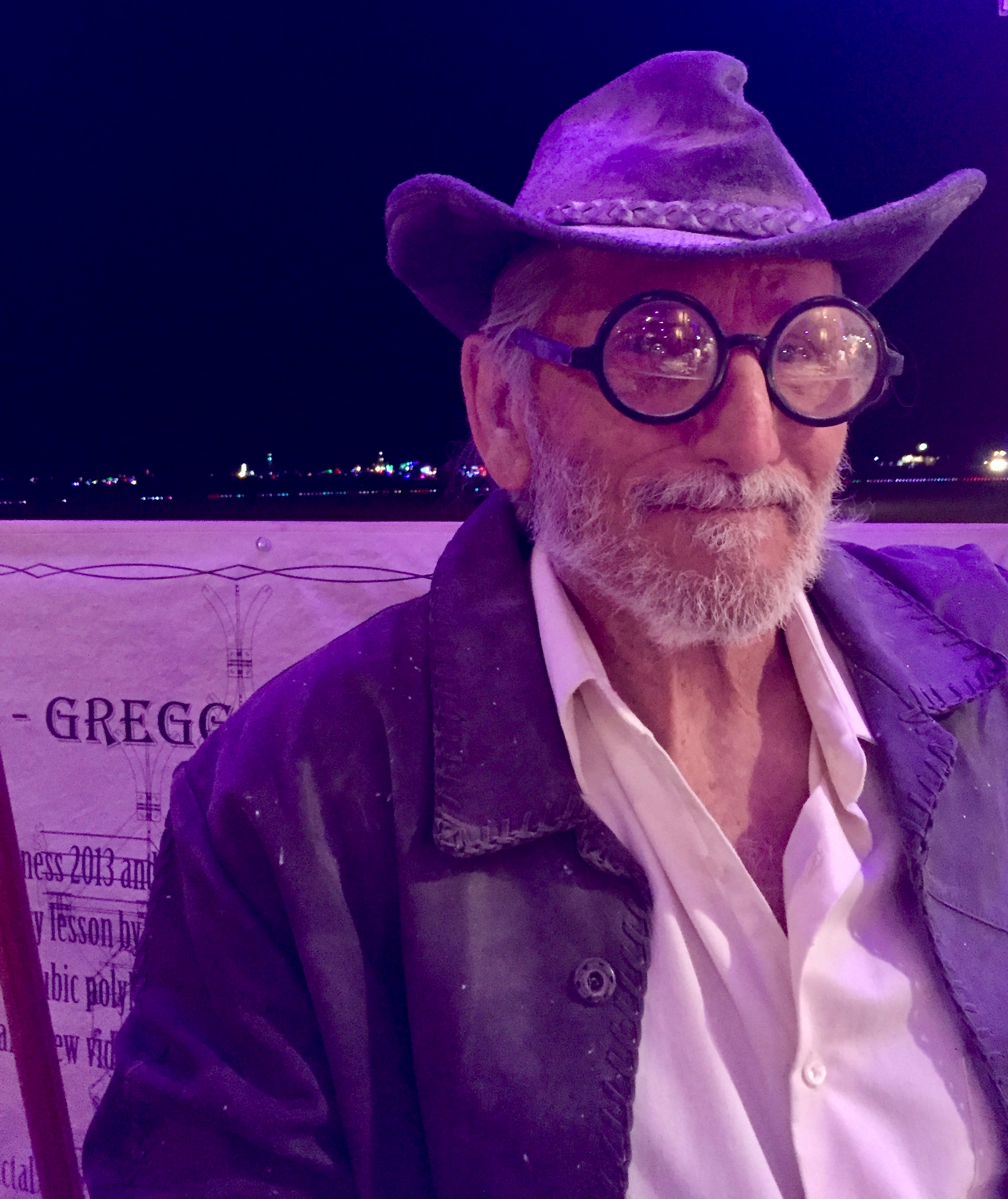
Somewhere over the Pacific is a ship carrying a Burning Man work of art to the three-year-old Wonderfruit Festival near Bangkok, Thailand. Architect Gregg Fleishman’s Otic Oasis is a 35-foot honeycomb structure from Burning Man 2011 and 2012.
Weighing in around 20,000 pounds, Otic Oasis will be re-assembled using a local crew with Kasetsart University student participation under Fleishman’s direction. Wonderfruit is giving Oasis a central position as one of the main stages at the festival’s highest elevation, the Solar Stage, where participants can best enjoy the sunsets and sunrises.
Fleishman has designed a structure specific to Wonderfruit, integrating the Otic Oasis and creating view towers for the stage and surrounding countryside.
Otic Oasis’ rhombohedric structure is based on the diamond form of the rhombic dodecahedron constructed within the framework of a 3-D checkerboard of cubes. The “Lost Triangle of Pythagoras,” which defines the diamond shape, is the unifying factor of Fleishman’s design.
Want the mathematical details? Check out Gregg’s lesson below.
Fleishman sees this design as a solution to the changing needs of people on a planet under pressure. Such buildings can be disassembled and moved in the face of climate-driven disasters. These geometric portable structures can be scaled using modular components — three stories, five stories or more. “Because everything is modular, geometry allows these buildings to be virtually limitless,” Fleishman says. No nails or metal connectors, just calculated joinery holds Fleishman’s designs in place.

Otic Oasis is the first example of Fleishman’s structures that melded an octahedral space frame structure with the rhombic modules characteristic of his earlier play structures. The purpose of the integration was to go big. The space frame provides the support structure, so the skin or modular network of pods can carry loads in multi-storied structures. The largest structure built in this way was Burning Man’s 2013’s Temple of Whollyness, a project with partners Melissa “Syn” Barron and Lightning Clearwater III.

I met Gregg Fleishman at Burning Man 2016 at his Guild Space in the Piazza under the Man. He offered a math lesson, demonstrating the principle at the core of his architecture.
He’s currently working on documenting the lost triangle in peer-reviewed journals.
Fleishman has works in museum collections such as the Yale University Art Gallery, the Museum of Modern Art and the Art Institute of Chicago. He was commissioned in 2014 by Art Villa Garikula, to install one of his buildings on the festival grounds near Tbilisi, Georgia. The installation, called “the American Pavilion,” was funded with a grant from the U.S. Embassy.

Fleishman is grateful to the Burning Man community for its support and appreciates the opportunity it provides to showcase his work. “I am trying to spread the knowledge I have about the 3-D cubic world to make building more adaptable to changing needs in these challenging times,” Fleishman says. “Burning Man allows me to continue to evolve and provides a global audience to appreciate the work. I find that as it evolves and expands its own boundaries, it parallels my own development. If I could contribute another Temple design or some structures for Fly Ranch, this fantasy ride would be complete.”
(Top photo: Otic Oasis at Burning Man, photo by Roy Two Thousand)
Gregg Fleishman’s Math Lesson: The Lost Triangle of Pythagoras
A diagonal cut through a 1 unit square results in triangles with edge lengths of 1, 1, and the square root of 2. Half of an equilateral triangle results in a triangle with edge lengths of 1, 2, and the square root of 3. In between those is the triangle found in a cube by the diagonal axis, a surface diagonal and one edge. This is a right angle triangle with edge lengths of 1, the square root of 2, the square root of 3. This is the “The Lost Triangle of Pythagoras”.
It defines dihedral angles in cubic polyhedral: A Dihedral Angle is the angle between adjacent faces in polyhedra. Cubic polyhedra are characterized by faces formed by symmetrical corner (and edge) truncations of the cube. Such faces are perpendicular to the relevant corner (or edge) axis. Therefore the dihedral angles of the corner centered polygons of cubic polyhedra are directly related to “The Lost Triangle of Pythagoras”.
The Lost Triangle and the rhombic dodecahedron: A Rhombic Dodecahedron has 12 rhombic (diamond) shaped faces with a short axis congruent with a cube edge and each long axis terminating at the center point of the two adjacent cubes. Therefore the edges of each rhombic face (connecting the ends of the long and short axes) extend from a cube corner to a cube center point. This is congruent with the opposite corner to corner diagonal of a cube. Therefore the rhombic face angles are equal to the sum of the reflections of “The Lost Triangle of Pythagoras”.


Will you sleep with me tonight?
Report comment
Love Gregg! Love the work!Love that it’s going to Wonderfruit!!!!
Report comment
Burning Man was founded by creative types (geniuses?), working out of their garages. Gregg Fleischman fits in with this image, although he has moved far beyond that, into some sort of geometrical guru. I’ve had the pleasure of chatting with Gregg the last two years at BM. Being a fellow math geek, I can appreciate his insights into the mathematical relationships found in certain geometric shapes. Being a builder by profession, I am amazed at the structures he’s created for BRC. My passion however, lies with the Golden Ratio, which is found in many different forms in the natural world.
Long live math and science! Don’t give in to ignorance!
Report comment
I think that something cool like this can actually decrease the temperature. Is this reflection? Or merely shadinest…..
Report comment
Comments are closed.